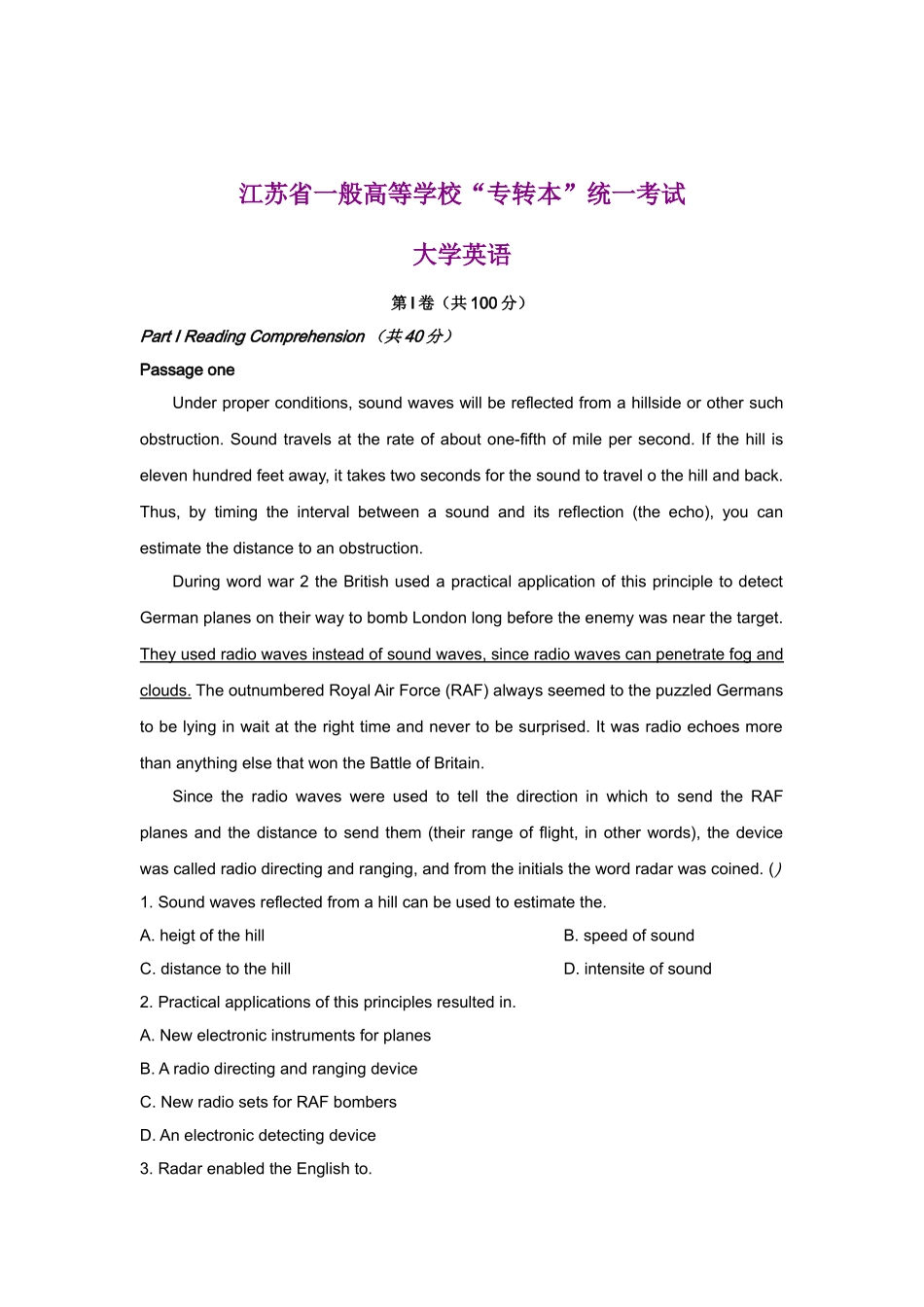江苏省一般高等学校“专转本”统一考试大学英语第 I 卷(共 100 分)Part I Reading Comprehension (共 40 分)Passage oneUnder proper conditions, sound waves will be reflected from a hillside or other such obstruction. Sound travels at the rate of about one-fifth of mile per second. If the hill is eleven hundred feet away, it takes two seconds for the sound to travel o the hill and back. Thus, by timing the interval between a sound and its reflection (the echo), you can estimate the distance to an obstruction.During word war 2 the British used a practical application of this principle to detect German planes on their way to bomb London long before the enemy was near the target. They used radio waves instead of sound waves, since radio waves can penetrate fog and clouds. The outnumbered Royal Air Force (RAF) always seemed to the puzzled Germans to be lying in wait at the right time and never to be surprised. It was radio echoes more than anything else that won the Battle of Britain.Since the radio waves were used to tell the direction in which to send the RAF planes and the distance to send them (their range of flight, in other words), the device was called radio directing and ranging, and from the initials the word radar was coined. ()1. Sound waves reflected from a hill can be used to estimate the.A. heigt of the hillB. speed of soundC. distance to the hillD. intensite of sound2. Practical applications of this principles resulted in.A. New electronic instruments for planesB. A radio directing and ranging deviceC. New radio sets for RAF bombersD. An electronic detecting device3. Radar enabled the English to.A. Detect German planes on their way to LondonB. Direct the outnumbered RAF planes...


